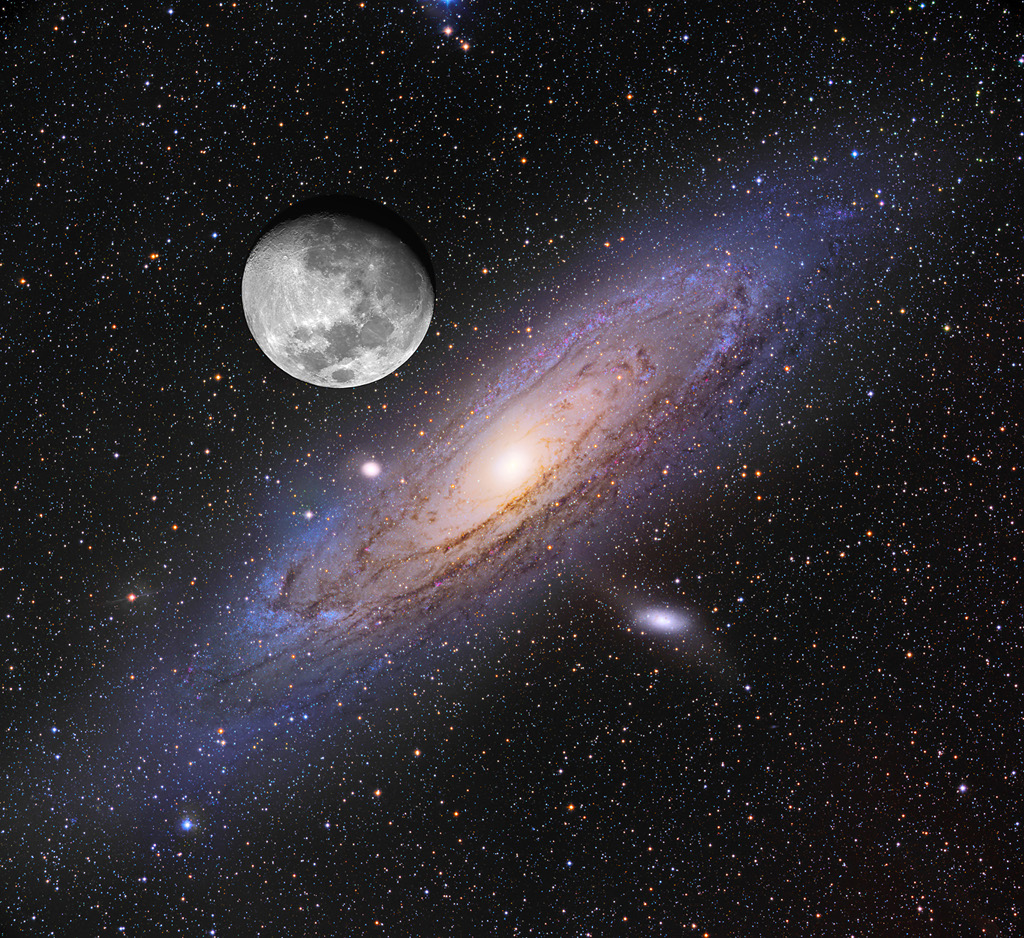2020年9月25日
Moon over Andromeda
Composite Image Credit & Copyright: Adam Block and Tim Puckett
Explanation: The Great Spiral Galaxy in Andromeda (also known as M31), a mere 2.5 million light-years distant, is the closest large spiral to our own Milky Way. Andromeda is visible to the unaided eye as a small, faint, fuzzy patch, but because its surface brightness is so low, casual skygazers can’t appreciate the galaxy’s impressive extent in planet Earth’s sky. This entertaining composite image compares the angular size of the nearby galaxy to a brighter, more familiar celestial sight. In it, a deep exposure of Andromeda, tracing beautiful blue star clusters in spiral arms far beyond the bright yellow core, is combined with a typical view of a nearly full Moon. Shown at the same angular scale, the Moon covers about 1/2 degree on the sky, while the galaxy is clearly several times that size. The deep Andromeda exposure also includes two bright satellite galaxies, M32 and M110 (below and right).
Tomorrow’s picture: Observe the Moon
月亮与仙女座大星系
组合影像提供与版权: Adam Block and Tim Puckett
说明: 距离只有2百50万光年远的仙女座大星系 (M31),是离我们银河系最近的大螺蜁星系。仙女大星系的表面亮度很低,因此在一般观星者的肉眼中,它只是个黯淡弥漫的小光斑,人们难以察觉这个星系在地球天空的真实跨幅。这幅具有娱乐性的组合影像,把这个邻居星系的张角和较亮且常见的月亮作比较。其中,在仙女大星系的长曝光影像里,可见到从明亮泛黄核心远远伸出的螺蜁臂上,散布着许多美丽的泛蓝星团,然后其上方叠着寻常的一轮明月。在这幅使用相同角度尺标呈现的影像里,仙女大星系的跨幅,很明显的是张角半度的月亮数倍之多。在这张仙女大星系的长曝光影像里,还可见到M32和M110(右下)这2个明亮的伴星系。
明日的图片: Observe the Moon







